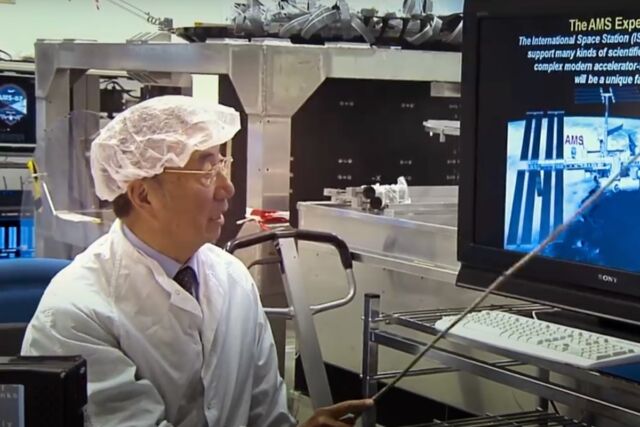It’s problematic enough when something goes wrong with a complicated, $2 billion physics experiment on Earth. Those challenges are considerably greater when said physics experiment is on the International Space Station, orbiting 250 miles above the surface of the Earth. Thanks to the efforts of the intrepid ISS crew, who conducted a series of spacewalks to make repairs, a damaged particle detector has a new lease on life.
Among the Stars, a new six-part documentary series on Disney+, chronicles the challenges the crew faced on that mission over the course of two years. The series also chronicles the final spaceflight of veteran NASA astronaut Chris Cassidy, which occurred right as the COVID-19 pandemic put the world in lockdown. “I joke that, three years ago, I knew I was going into quarantine in March 2020, according to plan,” Cassidy told Ars. “I just didn’t know that the whole world would join me there.”
As we’ve previously reported, the Alpha Magnetic Spectrometer (AMS) is a particle detector that launched to the International Space Station in 2011 on the penultimate flight of the space shuttle. The machine has steadily been collecting data during the last six years as it looks at a variety of particles from many sources, among them dark matter collisions.
Invented by Nobel laureate (and AMS principal investigator) Samuel C.C. Ting, the AMS consists of layers of smaller detectors and is designed to measure the energy and trajectory of cosmic ray particles, including high-energy photons, electrons, and positrons (electrons’ antimatter partners). The instrument also contains a bank of high-grade magnets that steer the path of electrically charged particles and help to separate the contributions from different particle types. The detectors allow researchers to distinguish between positrons and protons (which have equal positive charge but different mass), electrons (which are negatively charged), and other particles.
In 2014, the AMS team announced the results of its first 18 months of data collection. They turned out to be frustratingly ambiguous. As Matthew Francis wrote for Ars at the time, “While AMS-02 found an excess of a certain type of particle expected from some models of dark matter annihilation, this excess didn’t bear the hallmarks predicted for a dark matter signature. So something interesting is going on in the AMS-02 data, but the chances of dark matter being the cause seem a bit low.” Still, physicists were hopeful that additional data collected at even higher energies might yield more conclusive results.
But then the experiment hit a potential snag. In 2017, scientists monitoring the $2 billion AMS instrument noticed an increase in the “degradation” of several of the pumps that operate the thermal cooling system on its silicon tracker. Three of the four pumps had essentially failed. Only one is required, but the cooling system had lost all of its redundancy. Eventually, the fourth pump showed signs of failing, too.

So physicists associated with the experiment began working with a team at NASA to devise a long-range strategy that would extend the life of the AMS. They knew that the installation of a new set of pumps would require fairly intensive work, including the removal of insulation. All of that called for multiple spacewalks. ESA astronaut Luca Parmitano and NASA astronaut Andrew Morgan were the designated spacewalkers for the mission, with assistance from NASA astronauts Christina Koch and Jessica Meir, who were in charge of operating the robotic arm from inside the ISS.
Although he was on Earth, filmmaker Ben Turner was on hand to capture it all on camera for posterity, including video diaries and livestream footage. The executive producer and director of Among the Stars admits to a lifelong obsession with space flight, and among the highlights of his filmmaking career was shooting a music video for One Direction at NASA. The experience whetted his appetite for more. “As a documentary filmmaker, I have the ability to get into cool places and tell the story of cool people and try to see the world through their eyes,” he said. “It long was my ambition to do that with NASA.”
He got his chance when one of his company’s partners, James Corden (aka the voice of Peter Rabbit), happened to be chatting with Peter Rabbit director Will Gluck on set. Gluck mentioned he had met Cassidy. Knowing Turner was a big space fan, Corden put Gluck in touch with Turner for an introduction to the astronaut. Cassidy was soon involved in the project.
https://arstechnica.com/?p=1800732

